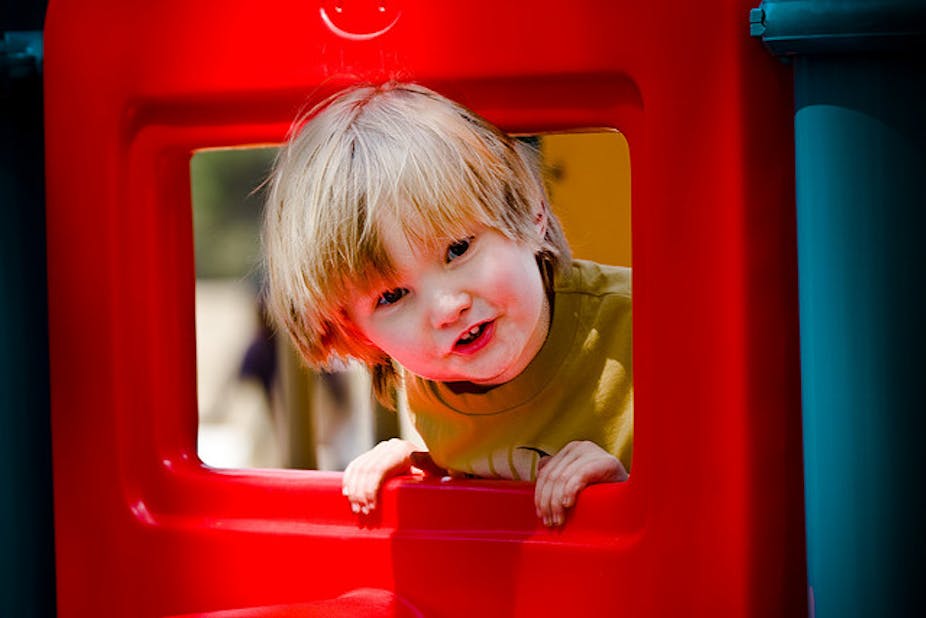With one in five Australian preschool-age children now overweight or obese, it’s no wonder kids’ weight is so often in the media spotlight.
While the causes of obesity are complex and multifactorial, it’s clear that poor diet and sedentary behaviour are central to the problem. But exercise is not just a means of weight control – whatever a child’s weight status, physical activity is a prerequisite for optimal growth and development.
Current Australian Government guidelines recommend young children be active for at least three hours a day. It’s also recommended that television and other small screen recreation be limited to no more than one hour a day for preschool-age children. Kids under two years of age shouldn’t watch any television.

But few families achieve these recommendations. To understand why, my colleagues and I studied the various influences of children’s activity levels. Parents reported that over time, society seems to be “deprogramming” the active nature of young children by exposing them to activities that are appealing but increasingly sedentary, such as television, video games and computers.
While children may be inherently active when young, the busyness of our lives and the increased attraction and use of technology in everyday life is helping to factor physical activity out of daily routines. So it remains a challenge to encourage young children to get active and stop the transition to excessive sedentary habits.
Some “fitness experts” promote the use of child-sized gym equipment, such as exercise bikes, treadmills, air walkers and rowing machines, which is sometimes coupled with the use of personal trainers or gym fitness programs. This might alleviate parents’ concerns about neighbourhood safety and “stranger danger” because the children are being closely supervised. But the type of sustained exercise demanded by fitness equipment isn’t aligned with the developmental capacities of young children.
While this style of gym program may assist adult fitness, it’s important to remember that children are not mini adults. Children have immature body systems (heart, lungs, muscles, bones, brain and nervous system), so they are physiologically as well as psychologically very different to adults. As a result, children favour short bursts and frequent changes of (mainly light) activity.
So how do we encourage physical activity? The answer is active play. Rather than focusing on fitness, young children need opportunities to refine their basic movement and coordination skills, including balance and the ability to run, climb, kick and catch.
If you want your pre-schooler to try a gym program, opt for the kind that focuses on balance and coordination skills in a fun setting. Then, when the child’s skill has developed – generally by the age of 10 years – you can place more emphasis on fitness.

If children can become adept at creating their own play opportunities, they’ll be less likely to become bored and revert to the instant gratification of video or computer games. This may require some parental guidance until children work out how to manage things themselves.
Creative, active play can involve simple things such playing in autumn leaves, having fun with cardboard boxes or with a garden hose or a water gun. Active play can also happen indoors. Try adapting ball games using balloons, making indoor cubbies or playing Simon says.
Promoting the concept of active transport – learning how to walk or ride to get to and from places – is another way to encourage kids to get active. If the distance from home to destination is too far, try parking the car a block or two from destination and walking part of the journey.
Remember, habits learnt in childhood are generally the ones carried through to adulthood. Active play and active transport will set young children up for life.

